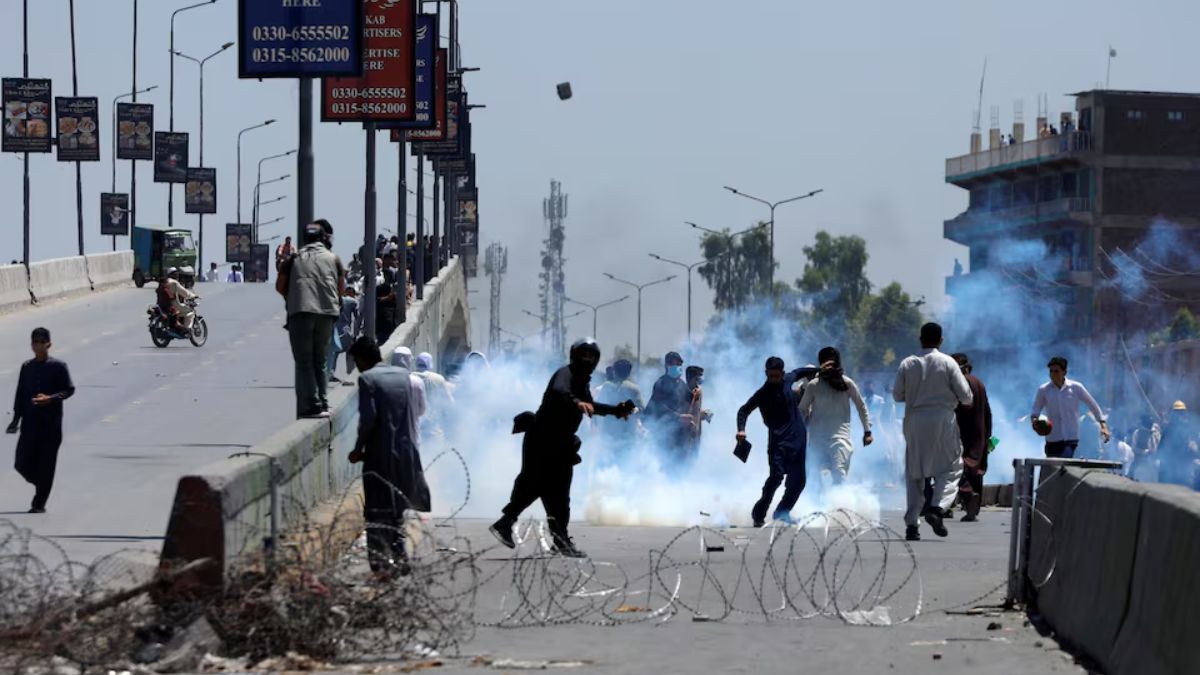The protests in PoK are welcome news for India, while the inflation-related unrest in Pakistan signals that Kashmir is no longer the central issue.
In the distant landscape of the low hills stretching towards the Line of Control, the Tiraṅgā proudly fluttered over the police station and magistrate’s office. The insurgents, armed solely with their ironic sensibility, found themselves at odds with the prevailing order. The tragic incident in early 1973, where a boat ferrying a wedding party across the Poonch River from Dadyal village capsized, resulting in the loss of 50 lives, marked a somber moment. With the advent of the Mangla Dam, residents were compelled to forsake horse-drawn carts for the perilous voyage to Mirpur, the nearest market town, over treacherous waters, as the promised bridge remained a mere mirage.
The uprising was quelled when Pakistan Army special forces made a dramatic entrance by parachute, as documented by sociologist Roger Ballard, for there seemed no other feasible route to reach Dadyal.
Recent events in Pakistan-occupied Kashmir (PoK) witnessed widespread protests against economic hardships and administrative inefficiencies. Confronted with stone-pelting mobs, central paramilitary forces resorted to gunfire near the regional capital, Muzaffarabad, resulting in three fatalities. In an attempt to pacify the escalating unrest, the government swiftly responded with an $83 million subsidy for essential commodities and electricity, acceding to the primary demands of the leading trade organizations orchestrating the protests.
While some commentators speculate about an impending rebellion against Pakistan across the LOC, the protests in PoK do not necessarily foreshadow such a scenario. Historically, the inhabitants of the region referred to as “Azad Kashmir” by Pakistan have had scant commonalities with Kashmiris—neither in language, ethnicity, nor politics.
Just five years ago, the largest demonstrations in the region were directed towards India. In 2008, tens of thousands sought to cross the LOC, culminating in a violent confrontation. Following the abrogation of Kashmir’s special status, pro-independence activists once again attempted to breach the de facto border.
However, the current protests are primarily rooted in PoK’s internal challenges, rather than the Kashmir conflict. The LOC has evolved into more than just a geographical boundary; it now delineates distinct political realms, providing potential avenues for future reconciliation.
A Fragile Democracy
The establishment of democracy faced formidable hurdles in the harsh terrain of PoK. Led by the London-educated lawyer Ibrahim Khan, Mirpur and Poonch rebelled against Maharaja Hari Singh’s authority in the summer of 1947. Khan’s forces, comprising demobilized Indian army and Indian National Army soldiers, swiftly overpowered the Maharaja’s troops, establishing an interim administration. However, within two years, Chaudhary Ghulam Abbas defected to Pakistan, claiming authority.
Forced out of power in 1950, Khan garnered support from the influential Sudhan clans of Mirpur. Subsequent clashes erupted, with the Pakistan Army’s 12 Division engaging the erstwhile allies against India. Abbas, a close associate of Pakistan’s founder Muhammad Ali Jinnah, opposed the establishment of a democratic system, fearing it would divert attention from the liberation movement. Conversely, Khan advocated for electoral representation for PoK.
Violence erupted once again in 1955, with Punjab police clashing with Sudhan militia in several towns. The rebellion was met with artillery fire, resulting in widespread destruction and imprisonment of rebel leaders. Similar to India’s response to the Kashmir crisis, Pakistan imposed a police state.
The suppression of the rebellion in 1956, followed by General Ayub Khan’s military coup in 1958, marked the demise of democratic governance in PoK. Islamabad consolidated its authority, limiting PoK’s autonomy on the pretext of its disputed status.
Ethnic and Economic Challenges
For centuries, ethnic Mirpuris navigated the Indus boats, connecting Punjab with Karachi, while their offspring sought livelihoods beyond the mountainous terrain. From the 1880s, Mirpuris found employment on steamships in the Indian Ocean, establishing diasporic communities in the UK and Australia. The influx of remittances led to a peculiar form of underdevelopment, characterized by a lack of industrial or agricultural progress.
The construction of the Mangla Dam in the 1960s failed to benefit PoK significantly, exacerbating its economic woes. The region received a negligible share of the project’s revenues, with the rehabilitation efforts proving inadequate. The newfound prosperity accentuated ethnic divisions, with Mirpuris asserting their Kashmiri identity, albeit linguistically distinct from Kashmiris across the Jhelum River.
Participation in the Kashmiri anti-India movement allowed Mirpuris to distance themselves from Punjabi-dominated Pakistan. However, the landscape shifted with the infiltration of Islamist organizations like Hizb-ul-Mujahideen, Lashkar-e-Taiba, and Jaish-e-Muhammad, orchestrated by the Inter-Services Intelligence (ISI). The jihad in Kashmir not only targeted India but also suppressed Mirpuri nationalism.
Symmetrical Realities
Under the dominion of Islamabad and the military, PoK gradually integrated into Pakistan’s political milieu. Despite intermittent civilian rule, Islamabad’s influence persisted, as evidenced by the installation of compliant leaders. Nonetheless, recent protests underscore the growing focus on local issues, signaling a departure from traditional allegiances.
PoK, despite its contribution to Pakistan’s hydroelectricity, grapples with chronic power shortages and unequal distribution of resources. Constitutional amendments in 2018 brought PoK closer to full integration into Pakistan, mirroring the status of Jammu and Kashmir in India.
Institutional parity between the two parts of Maharaja Hari Singh’s Kashmir now awaits formal acknowledgment through bilateral agreements, marking a significant step towards acknowledging ground realities since 1947.




